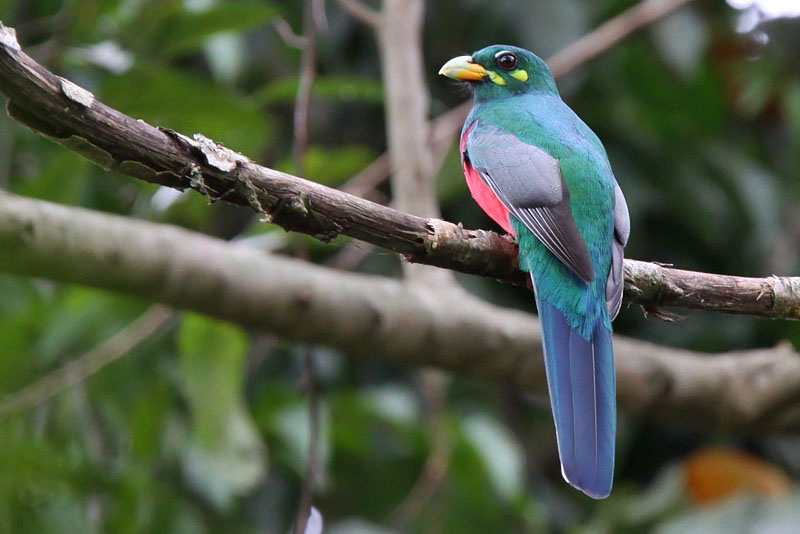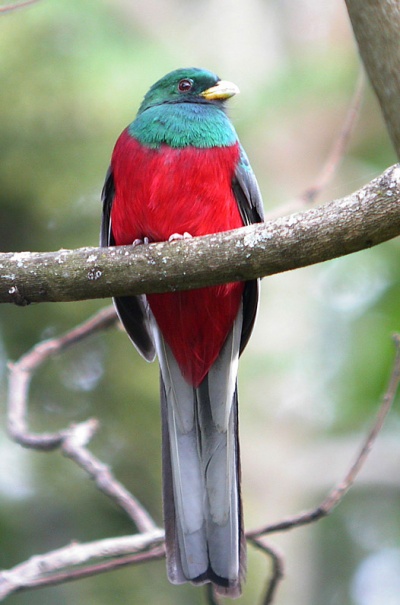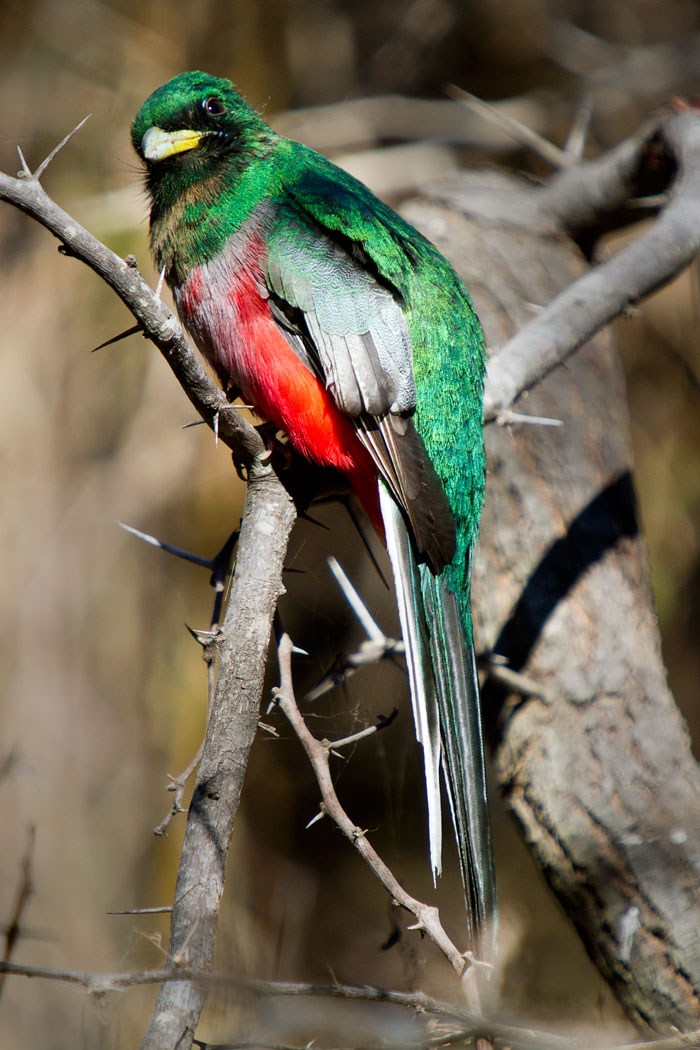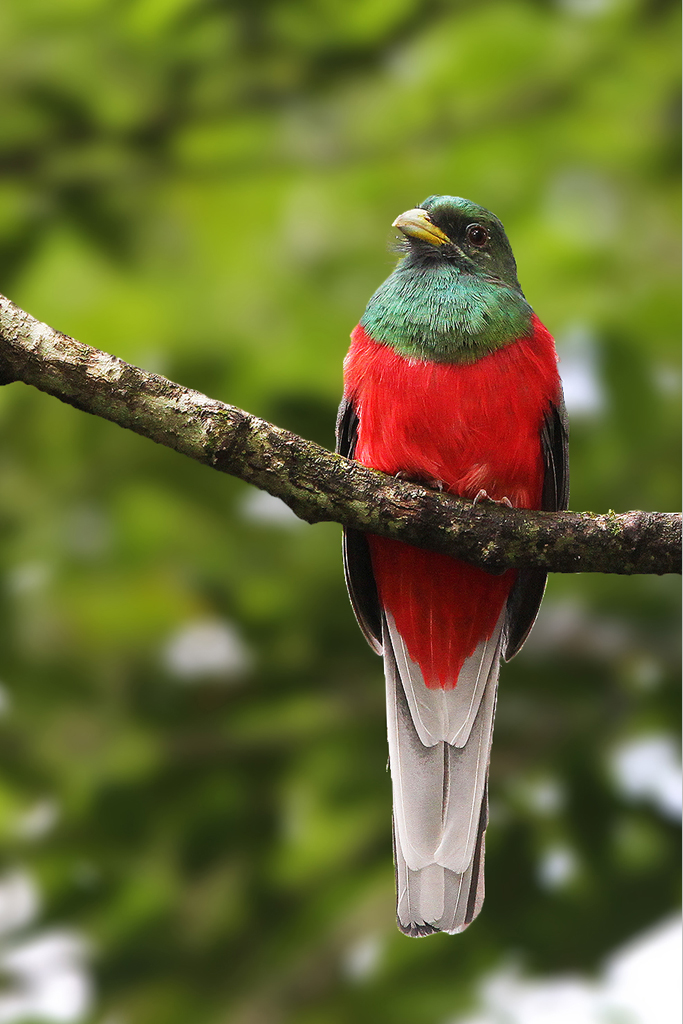
Apaloderma narina
SUBFAMILY
Apalodermatinae
TAXONOMY
Trogon narina Stephens, 1815, Cape Province. Six subspecies.
OTHER COMMON NAMES
French; Couroucou narina; German: Narinatrogon; Spanish:
Trogуn de Narina.
PHYSICAL CHARACTERISTICS
11.8–12.6 in (30–32 cm); 1.8–3.3 oz (51–95 g). Upperparts and
underparts iridescent green to midbreast, abdomen and flanks
crimson, undertail whitish, white bar on underwing, yellow bill.
DISTRIBUTION
Sub-Saharan Africa, from Sierra Leone through Congo Basin
and Rift Valley to Ethiopia and eastern South Africa.
HABITAT
Mid-altitude rainforests, gallery forests, savanna, and woodlands.
BEHAVIOR
Territorial, with non-lek male singing groups congregating
during breeding season.
FEEDING ECOLOGY AND DIET
Sally-gleaning insectivore, feeding on caterpillars, orthopterans,
beetles, spiders, and small reptiles.
REPRODUCTIVE BIOLOGY
Monogamous. Breeds year-round continent-wide, but primarily
in spring and summer; nests in unlined natural cavities; lays
one to four eggs (most often two or three); incubates 16–21
days; fledges in 25–28 days.
CONSERVATION STATUS
The most widespread trogon in Africa, albeit uncommon; densities
up to 1.25 individuals per hectare reported.
SIGNIFICANCE TO HUMANS
None known.
Photo Gallery of - Narina trogon




 Animalia Life
Animalia Life